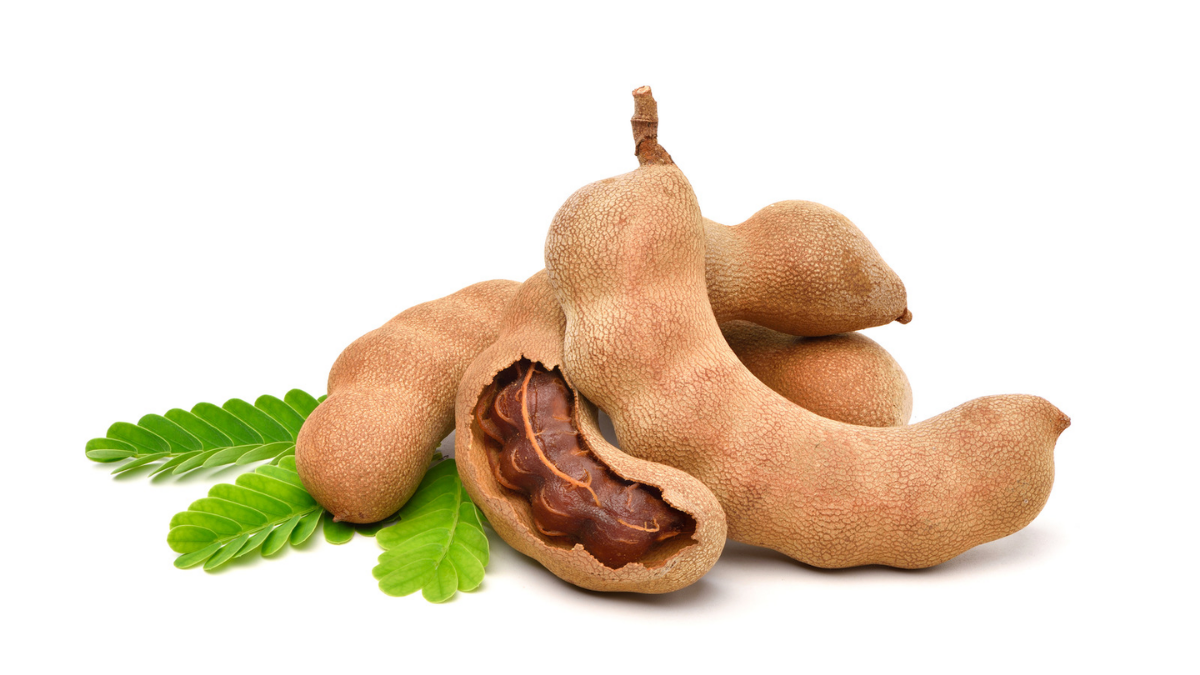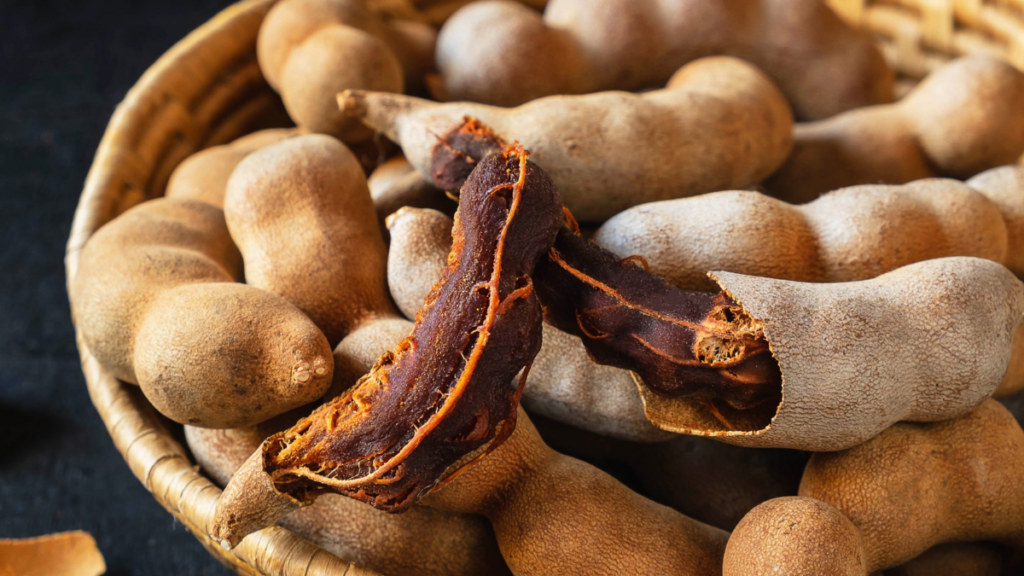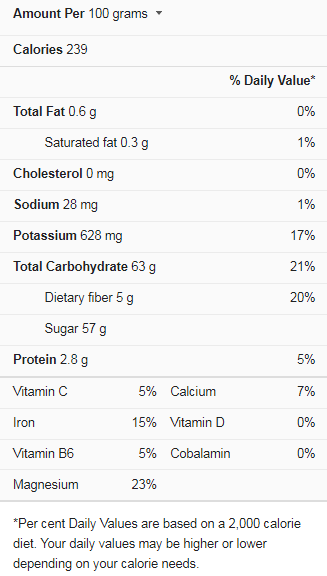The tamarind tree is renowned for its beauty and fruit in many world regions. Tamarind trees are classified as leguminous because their fruit is shaped like a bean pod. The acidic pulp of this bean becomes incredibly sweet as it ripens. The fruit is eaten fresh, and the pulp is used in cooking.
The tamarind tree’s leaves, beans, bark, and would have a wide range of applications. Worcestershire sauce contains tamarind, used in various Asian, South and Central American, African, and Caribbean dishes. Many chutneys, sauces, sweets, and drinks contain it.
Tamarind Nutrition Facts
Tamarind’s Health Benefits
Traditional medicine uses tamarind, but its medicinal potential needs further investigation. Tamarind pulp is high in nutrients that might help you stay healthy.
Tissue Wellness
The building blocks of protein, amino acids, are required for the body to create and repair tissues. Some amino acids are essential, which means they can’t be synthesized by the body and must be obtained through food. Except for tryptophan, tamarind has high levels of all necessary amino acids. For the other amino acids, it meets the World Health Organization’s requirements for an optimal protein. However, scientists aren’t clear about how well the body can absorb all of the nutrients in tamarind.
Reduced Cancer Risk
Scientists recommend antioxidant-rich foods for various reasons, including cancer prevention. Antioxidants can protect cell DNA from free radical damage. Many malignancies, according to scientists, start with DNA damage. Antioxidant properties are present in phytochemicals found in plants, and Tamarind is high in beta-carotene and other phytonutrients.
Healthy Brain
The B vitamin group includes eight different vitamins with comparable functions. Because they are all water-soluble, the body does not store them. Without using supplements, you should be able to receive enough B vitamins through your food. The entire B vitamin family is necessary for optimum health, and they are significant for the brain and neurological system to function correctly. B vitamins, particularly thiamine and folate, are abundant in tamarind. Tamarind, like other plants, does not contain B12.
Bone Health
Those who consume enough magnesium in their diet have higher bone density than those who do not. Many people, particularly teenagers and those over the age of 70, do not get enough magnesium. Magnesium is abundant in tamarind, and it also has a higher calcium content than many plant meals. These two minerals combined with weight-bearing exercise may help prevent osteoporosis and bone fractures. To utilize calcium, the body requires vitamin D. Because tamarind isn’t a good source of vitamin D, you’ll need to supplement with it.
Weight Loss Assistance
Tamarind is high in fiber and contains no fat. Because tamarind includes flavonoids and polyphenols, studies suggest that consuming it daily may aid weight loss. In addition, tamarind contains hydroxy citric acid, which suppresses hunger by blocking amylase, an enzyme that converts carbohydrates to fat.
Peptic Ulcer Prevention
Peptic ulcers are excruciatingly painful. These sores form on the stomach’s and small intestine’s inner lining. The polyphenolic chemicals present in tamarind can help prevent ulcers.
Effective in the Treatment of Diabetes
Tamarind seed extracts are anti-inflammatory, and they’ve even been claimed to help people with diabetes balance their blood sugar levels and reverse pancreatic tissue damage. Tamarind contains the enzyme alpha-amylase, which has been shown to lower blood sugar levels.
It Aids Digestion
Since ancient times, tamarind has been used as a laxative because of its tartaric acid, malic acid, and potassium content. It is also utilized as a diarrhea treatment due to calming abdominal muscles. As a result, the fruit is used to treat constipation, the leaves are used to treat diarrhea, and the root and bark are used to treat abdominal pain.
Promotes Heart Health
The tamarind is a heart-healthy fruit. Tamarind flavonoids cut LDL or “bad” cholesterol and boost HDL or “good” cholesterol levels, limiting triglyceride (a form of fat) build-up in the blood. It also contains a lot of potassium, which can help keep your blood pressure under control.
It Looks After your Liver
It turns out that tamarind is also good for your liver. A high-calorie diet causes a fatty liver; however, studies show that the daily use of tamarind extracts can correct this disease.
It can Assist you in Managing Allergies
Because of its antihistaminic characteristics, it is an effective treatment for allergic asthma and cough. It’s also high in vitamin C, which helps to strengthen the immune system and prevent colds and coughs.
Is it Healthy to Consume Tamarind Every Day?
Tamarind benefits your health in various ways, including increasing your immunity and protecting your liver and heart from disease. Tamarind is high in fiber and contains no fat. Because tamarind includes flavonoids and polyphenols, studies suggest that consuming it daily may aid weight loss. Tamarind offers a tart flavor to savory meals, but too much of it can cause adverse side effects. Tamarinds can cause everything from acid reflux to a greater risk of tooth problems. It has laxative properties and may aggravate the weaver’s cough.
It has been suggested that it may interfere with blood sugar regulation. If you have diabetes and consume tamarind, check your blood sugar levels. Diabetes treatments may require dosage modifications, and Tamarind seed may help to reduce blood sugar levels. Many people are allergic to the chemicals in this fruit and get rashes, itching, inflammation, stinging sensations, lightheadedness, fainting, vomiting, shortness of breath, and other symptoms resulting from eating it.
Is Tamarind Beneficial to the Kidneys?
Antioxidants in tamarind help to prevent cancer and kidney failure. Tamarind is a tree species, and medicine is made from partially dried fruit. Tamarind treats constipation, liver and gallbladder problems, and stomach difficulties. Colds and fevers are also treated with it. Tamarind has anti-inflammatory properties. Lupeol, an anti-cancer and anti-inflammatory polyphenol found in tamarind pulp, helps treat gout and rheumatic disorders.”Tamarind eating offers protection against kidney stones,” according to the journal “Nutrition Research.
Researchers in India revealed that tamarind extract reduces colon cancer progression and is used as a traditional diabetes treatment. Because tamarind contains a significant amount of unsaturated acids and fiber, it can assist the body in cleansing. The medicine also purges the gallbladder, which helps to alleviate stomach bile issues. This will also help the liver digest lipids more efficiently and reduce inflammation.
Is Tamarind Good for Blood Pressure?
The high fiber content of tamarind is claimed to help lower LDL or harmful cholesterol levels. The potassium in tamarind is supposed to aid in the reduction of blood pressure or the maintenance of healthy blood pressure. Vitamin C is also abundant in tamarind, which offers numerous health benefits. Tamarind is good for your heart since it helps decrease blood cholesterol and blood pressure, and it has even been demonstrated to help lower dangerous LDL cholesterol levels.
Imli’s potassium content helps decrease blood pressure, while Vitamin C neutralizes dangerous free radicals. Tamarind benefits your health in various ways, including increasing your immunity and protecting your liver and heart from disease. Tamarind is high in fiber and contains no fat. Because tamarind includes flavonoids and polyphenols, studies suggest that consuming it daily may aid weight loss.
Is Tamarind Cholesterol-Lowering?
This fruit may help your heart in a variety of ways. It includes polyphenols, such as flavonoids, some of which can aid with cholesterol regulation. In one study, tamarind fruit extract was reported to lower total cholesterol, LDL (bad) cholesterol, and triglycerides in hamsters with high cholesterol. Volunteers’ triglyceride levels dropped by 24 percent after drinking juice made with tamarind flour. This was discovered in a study that looked into the effects of using the fruit to reduce biochemical disruptions linked to diabetes. Tamarind is an excellent weight-loss food since it is high in fiber and low in fat.
It’s high in flavonoids and polyphenols, which can help you lose weight by boosting your metabolism. Its high fiber content increases fullness, lowers unhealthy food cravings and bulks out the stool. To begin with, Vitamin C, which is abundant in tamarind, aids in the production of male sperm. Not only that, but some research suggests that Vitamin C can help men improve their sperm count by preventing sperm deaths inside the testicles.
Is Tamarind Beneficial to Hair?
Tamarind is also an excellent home cure for various hair and skin issues. Tamarind eating and application regularly can help to decrease blemishes and keep skin smooth. Tamarind also strengthens hair and prevents hair loss. You can construct a natural bleaching mask by combining tamarind pulp, lemon juice, and honey. Apply to the face and leave for 15 minutes to dry. Rinse with cold water. Extract tamarind juice by soaking it in warm water and draining it to prevent hair loss and strengthen hair.
To avoid hair breakage, comb your hair thoroughly. Massage the tamarind-infused water into your scalp with your fingertips. Allow for an 8-10 minute rest period. Wash your hair thoroughly with the remaining tamarind water first, then with normal water.
Is Tamarind Good for your Immune System?
Tamarind is high in vitamin C and other antioxidants, enhancing the immune system and preventing the spreading of microbial and fungal illnesses. Its antibacterial characteristics aid in the healing of infections. Tamarind is high in vitamin C and antioxidants, which help to strengthen the immune system. This tart fruit can also stop microbial and fungal illnesses from spreading. Per 100g, there is significantly more alpha-carotene.
Alpha-carotene is identical to beta carotene but has a more substantial antioxidant impact. It promotes strong bones, skin, vision, and a robust immune system. The fibrous pulp covering the seeds is the edible component of the tamarind plant, and this pulp can be consumed raw or transformed into something new.
Conclusion
Tamarind can be eaten simply by opening the pod and consuming the pulp. If your local market doesn’t have them, you can order them through the mail because the pods don’t spoil readily. Tamarind can also be purchased as a crushed block, a concentrate, or a bottled paste, and these forms are shelf-stable until they are used. Depending on when the pods were gathered, some tamarind products will be sweeter than others. Avoid tamarind in recipes that call for additional sugar or a lot of oil for the healthiest results.




